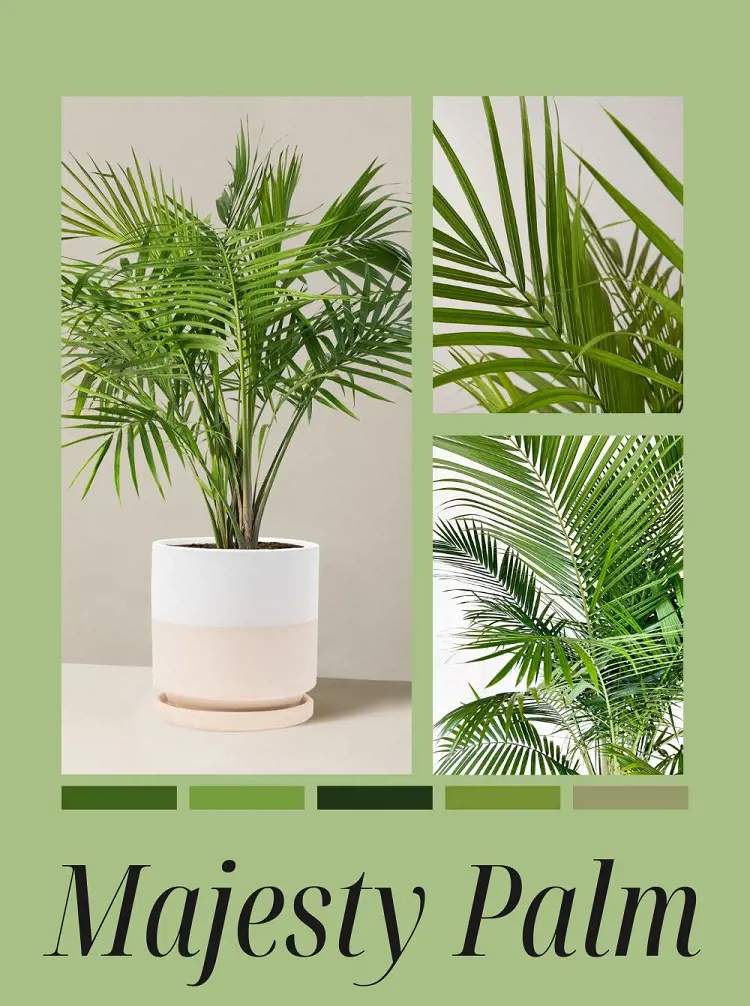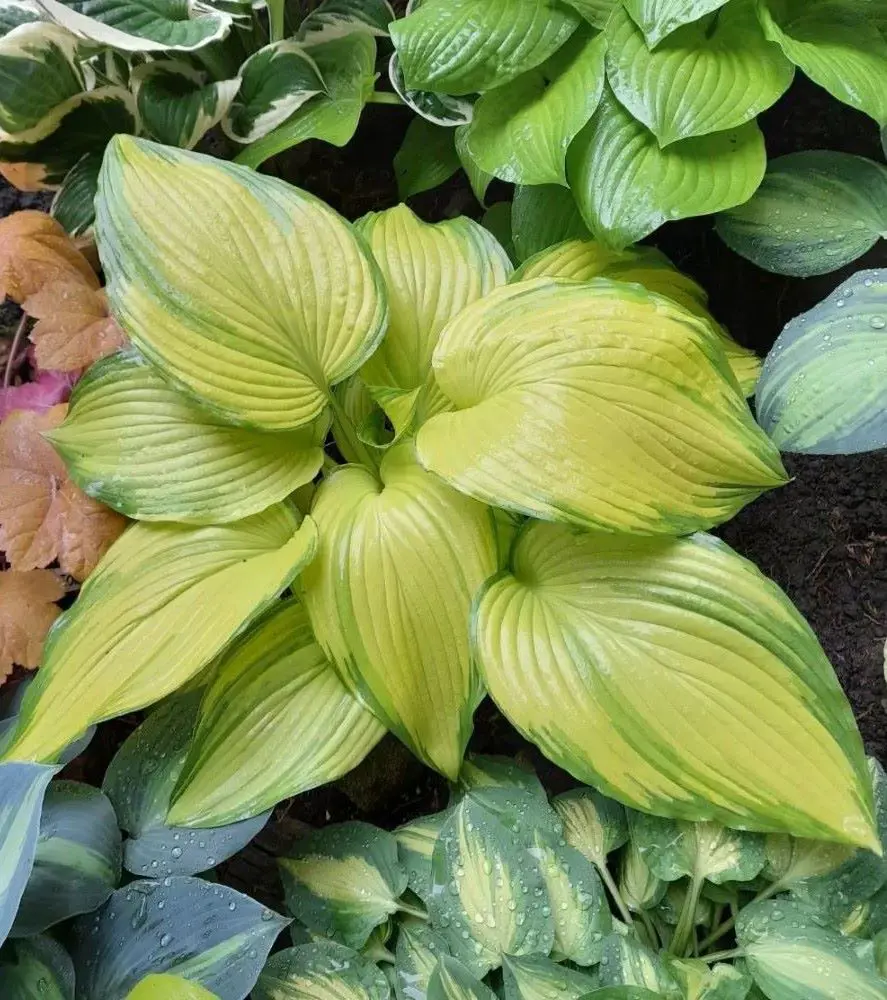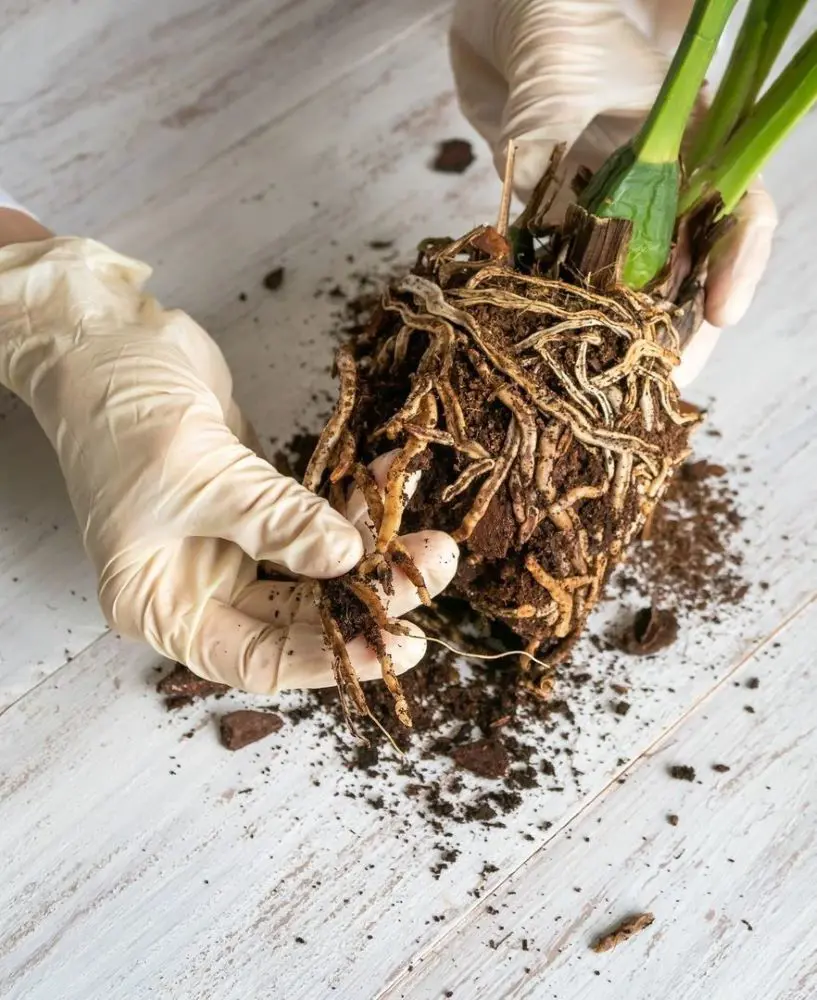How To Grow And Care Dahlia Flower
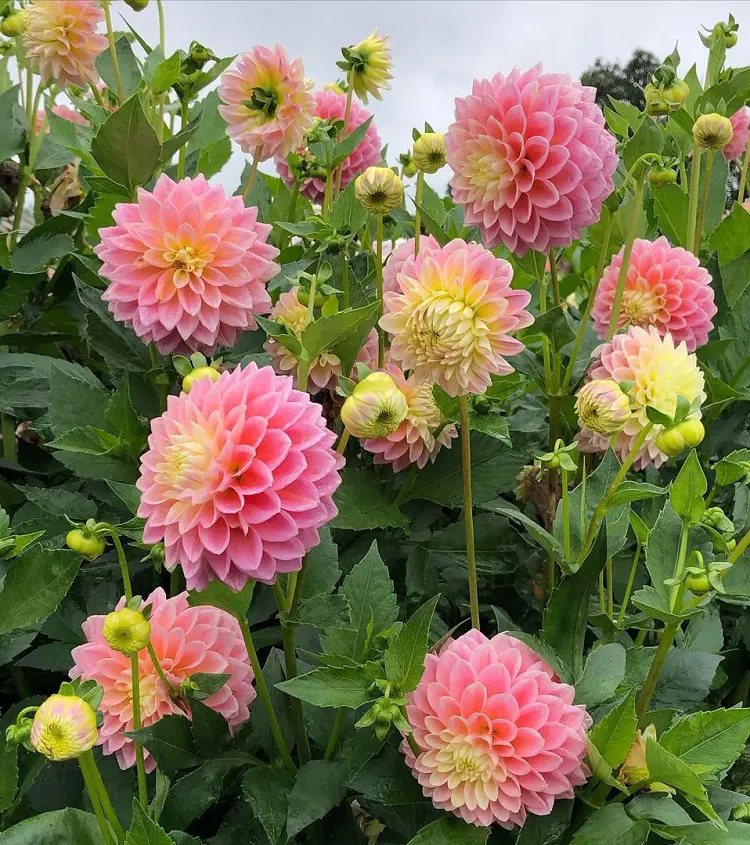
This post may contain affiliate links. If you make a purchase through links on our site, we may earn a commission.
Dahlia is a bushy plant native to Central America. It produces flowers that are highly valued for emitting a pleasant fragrance. Additionally, the plant is also recognized for its potential medicinal benefits, though research is limited.
Their tubers are edible and can be used in cooking. Dahlias also make excellent companions for vegetables, providing pest control and supporting a biodiverse garden.
Dahlia Flower Overview
| Scientific Name | Dahlia spp. |
| Common Name | Dahlia |
| Family | Asteraceae |
| Type | Herbaceous perennial |
| Size | Varies |
| Sunlight Requirement | Full sun |
| Soil Type/pH | Well-draining soil; slightly acidic to neutral pH (6.0-7.5) |
| Growing Season | Summer, Fall |
| USDA Growing Zone | 8-10 |
| Native Area | Mexico, Central America, Colombia |
What Is a Dahlia Flower?
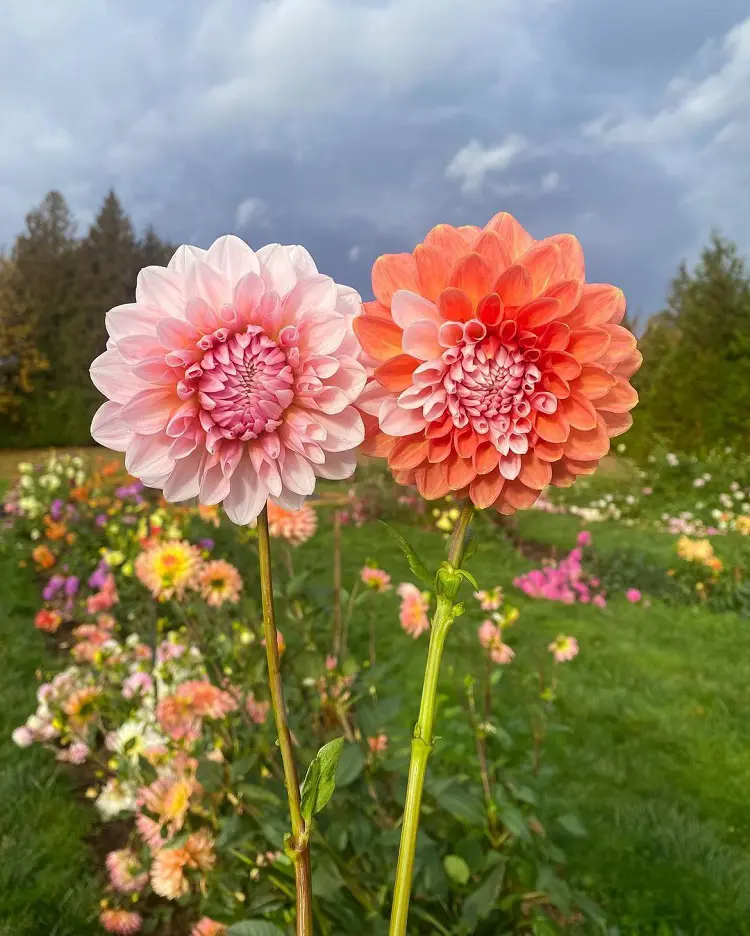
Dahlia is a genus of flowering plants that belong to the Asteraceae family, which also includes daisies and sunflowers. These beautiful and diverse plants are native to Mexico, Central America, and Colombia, and they are named after the Swedish botanist Anders Dahl.
Dahlias are known for their vibrant and showy flowers, which come in a wide range of colors, shapes, and sizes. The flowers can be simple and single-petaled or complex with multiple layers of petals, resembling pom-poms or dinner-plate-sized blooms. The plant's foliage is typically dark green and fern-like.
Dahlias are popular ornamental plants and are often grown in gardens and used as cut flowers in floral arrangements. They bloom from midsummer to the first frost in the fall, and their tuberous roots allow them to be propagated and stored for the next growing season.
Dahlia Care

While dahlias are not fussy growers, there are a few key conditions you'll need to provide to ensure they thrive in your garden. With proper care, dahlias produce abundant, vibrant flowers in various sizes and shapes. Neglecting them can lead to fewer, smaller, or even no blooms at all.
Light
Dahlias can grow in some shade, but they prefer full sun, so it's best to plant them where they can receive plenty of it. They can stand taller and require less assistance if they receive more sunlight. But they will still make flowers, even if it's a little shady. Give them some shade in the afternoon if your area experiences extreme heat.
However, try to ensure your dahlia plant receives at least 6 to 8 hours of sunlight each day when choosing a location for it.
Soil
Use well-draining soil with a pH range of slightly acidic to neutral when planting dahlias. This promotes happy growth for the dahlias. Planting their tubers is best done in the spring, following your area's last frost.
When planting, leave a gap of approximately 18 to 24 inches between each one. Make sure the tuber's eye or growing point is facing up when you insert it horizontally into a hole that is about 6 inches deep. After that, fill the tuber with dirt and water it thoroughly.
Water
When you first plant dahlias, don't give them too much water right away. Too much water at the beginning can make their roots rot. Once they've settled in, they like about 1 inch of water each week, and a bit more if it's really hot. When you water them, make sure to do it at the base of the plant, not from the top.
If there's been a big rain, the flowers might get so heavy with water that they bend over. If that happens, you might need to gently shake them to help the extra water come out. So, start with less water at first, then give them what they need each week, and be careful how you water them to keep your dahlias happy.
Temperature
Dahlias thrive in moderate temperatures, and extreme conditions can pose challenges. They don't fare well in prolonged, scorching summers, making cultivation tricky in regions with extended heat, like the Lower South (Zone 8).
In warmer zones like the Coastal and Tropical South (Zones 9 and 10), additional care may be needed. When overwintering indoors, maintain a temperature above 60°F (15°C).
Humidity
Dahlias benefit from a humid environment when overwintering indoors. While in their dormant state, it's crucial to provide sufficient moisture to prevent desiccation. Aim to keep the humidity levels stable, ensuring they don't drop too low.
Maintaining a humid area can help dahlias conserve energy during their winter rest. This attention to humidity, coupled with the appropriate temperature range, contributes to the overall well-being of the dahlias during their indoor hiatus.
Fertilizer
Dahlias need a lot of nutrients to grow well, and giving them more food will result in bigger and more abundant flowers. When fertilizing, choose a fertilizer with a high phosphorus content, like a 10-30-20 ratio, as this promotes blooming. Follow the instructions on the product label for the right amount. Avoid using fertilizers high in nitrogen because too much nitrogen leads to lots of leaves but not many flowers.
If you're planning to dig up and store your tubers for the winter, stop fertilizing by the end of August. This helps prevent excessive growth late in the season as you prepare the tubers for their dormant period.
Pruning
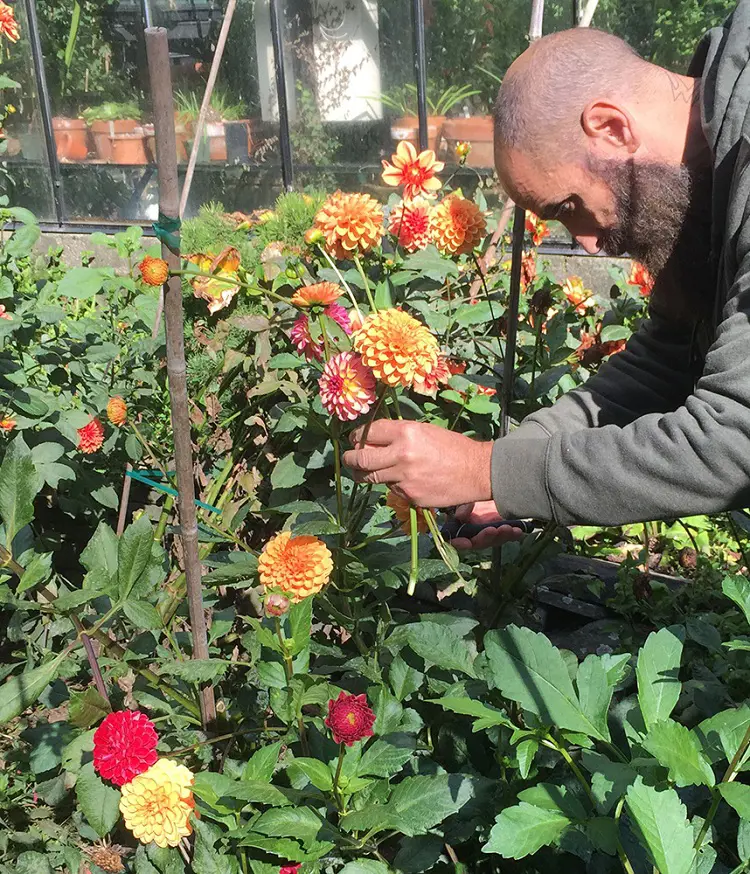
Pruning and maintaining dahlias can help promote healthy growth, encourage more blooms, and manage the plant's overall appearance. Here's a general guide on how to prune and maintain dahlia flowers:
1. Deadheading
Remove spent flowers regularly. This process, known as deadheading, encourages the plant to produce more blooms. Cut the flower stem just above a set of healthy leaves or buds.
2. Pinching
Pinching involves removing the growing tips of young dahlias to encourage branching and bushier growth. Pinch off the top set of leaves when the plant is about 12-18 inches tall. This helps create a more compact and sturdy plant.
3. Remove Discolored or Diseased Foliage
Regularly inspect your dahlia plants for discolored or diseased foliage. Cut off any affected leaves or stems to prevent the spread of diseases and maintain the plant's overall health.
4. Prune for Shape
Throughout the growing season, prune the dahlias to maintain the desired shape and size. Cut back leggy or overly tall stems to promote a more balanced appearance. Focus on removing excessive growth and maintaining an open and airy plant structure.
5. Divide Tubers
Dahlias benefit from division every few years to prevent overcrowding. Lift the tubers in the fall, divide them into clumps with at least one eye each, and replant them. This encourages healthier growth and more robust blooms.
6. Stake Tall Varieties
Tall dahlia varieties may require staking to prevent them from flopping over. Install stakes early in the season and tie the plants gently as they grow. This provides support for the stems and prevents breakage.
Potting and Repotting
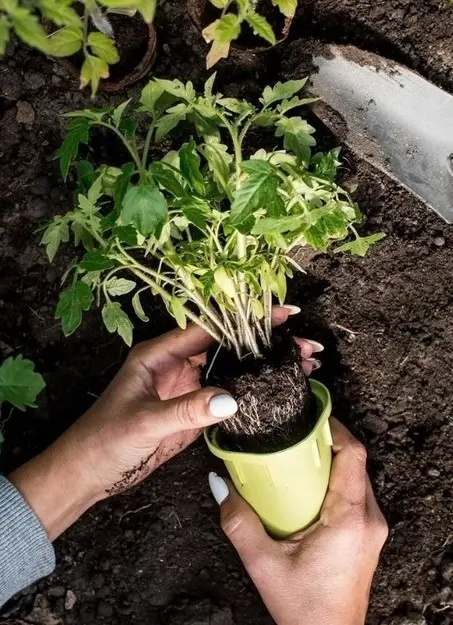
When potting dahlias, choose a spacious container with drainage holes and fill it with a well-draining potting mix. Place the tuber in the pot, ensuring the eyes face upward, and cover with soil. Water thoroughly and provide ample sunlight. This method suits gardeners with limited space or those in colder climates, allowing for easy mobility and protection against frost.
Repot dahlias in spring before new growth starts. Inspect tubers, discard any damaged parts, and choose a larger pot if needed. Plant at the correct depth, and water, and support taller varieties with stakes. Repotting helps refresh the soil, allows for inspection, and accommodates the plant's growth. It's essential for maintaining optimal health, preventing overcrowding, and ensuring vigorous blooms in successive growing seasons.
Winter Care
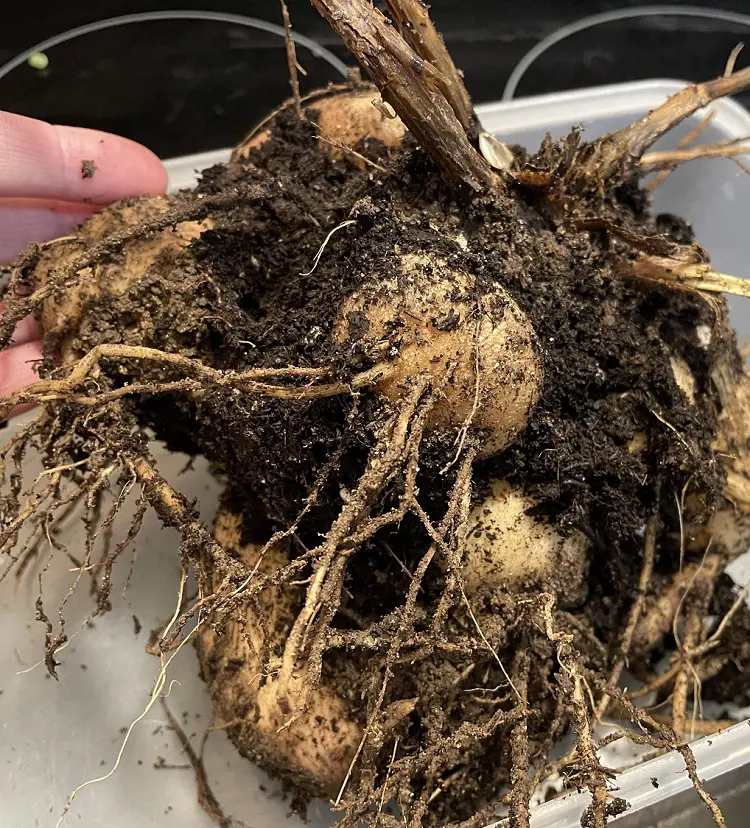
Protecting dahlias in winter is a crucial step to ensure their survival and successful regrowth in the following spring. Here is a step-by-step guide:
After First Autumn Frosts
- Cut back the dahlia stems to around 10-15cm (4-6in) from the ground once the foliage has been blackened by the first autumn frosts.
In Mild Regions with Well-Drained Soil
- Leave the tubers in the ground.
- Cover them with a 7.5-15cm (3-6in) deep layer of bark to protect them from frost.
In Colder Areas or Heavy Soils
- Lift the tubers carefully from the ground using a garden fork.
Post-Lifting Care
- Allow the tubers to dry for a few days in a cool place, preferably upside down to allow moisture in the stems to drain out.
- Trim off any fine and damaged roots.
Storage
- Place the tubers in shallow boxes or trays.
- Pack around them with peat-free compost or dry sand, covering the tubers but leaving the crown exposed (where the stems join the tubers).
- Store the tubers in a cool, dry, frost-free place over winter.
Regular Inspection
- Inspect the tubers regularly for signs of rotting.
- Discard any tubers that appear unhealthy or damaged.
Common Pests in Dahlia Flowers
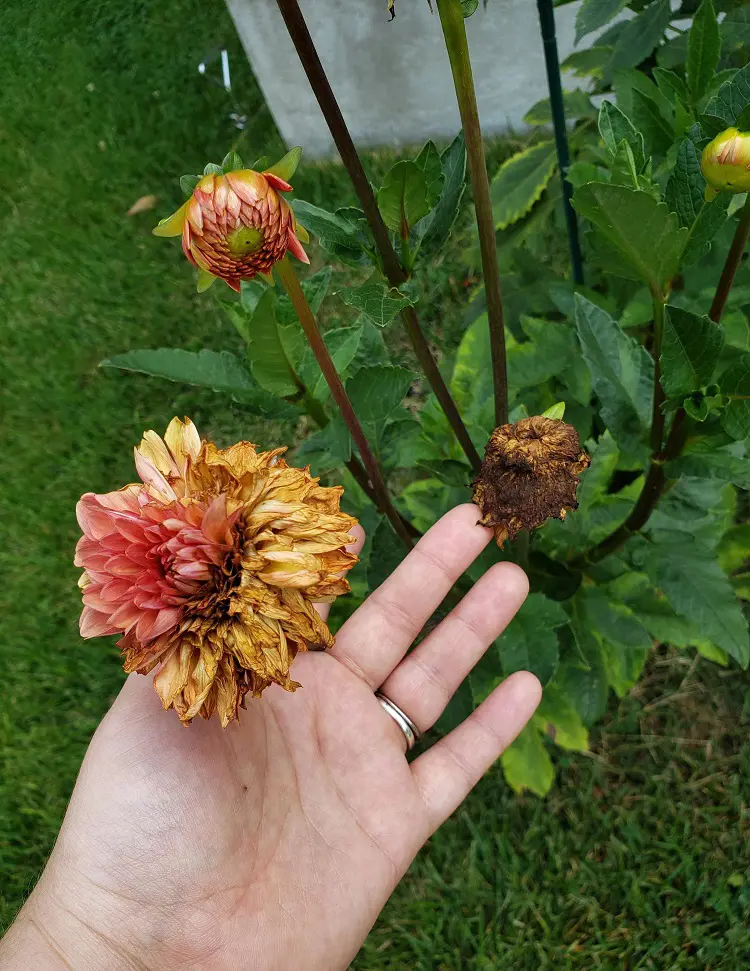
Dahlias are susceptible to various pests that can harm their health and appearance. Common culprits include aphids, tiny insects that suck sap and distort growth; spider mites, which create fine webs and cause stippling on leaves; and earwigs, nocturnal insects that feed on petals.
Slugs and snails may also target dahlias, leaving behind chewed foliage. Vigilance is crucial for early pest detection. Control measures range from handpicking larger invaders to using insecticidal soap for smaller pests. Regular inspection and prompt intervention help protect dahlias from these nuisances, promoting robust and vibrant blooms.
How To Plant Dahlias Tubers
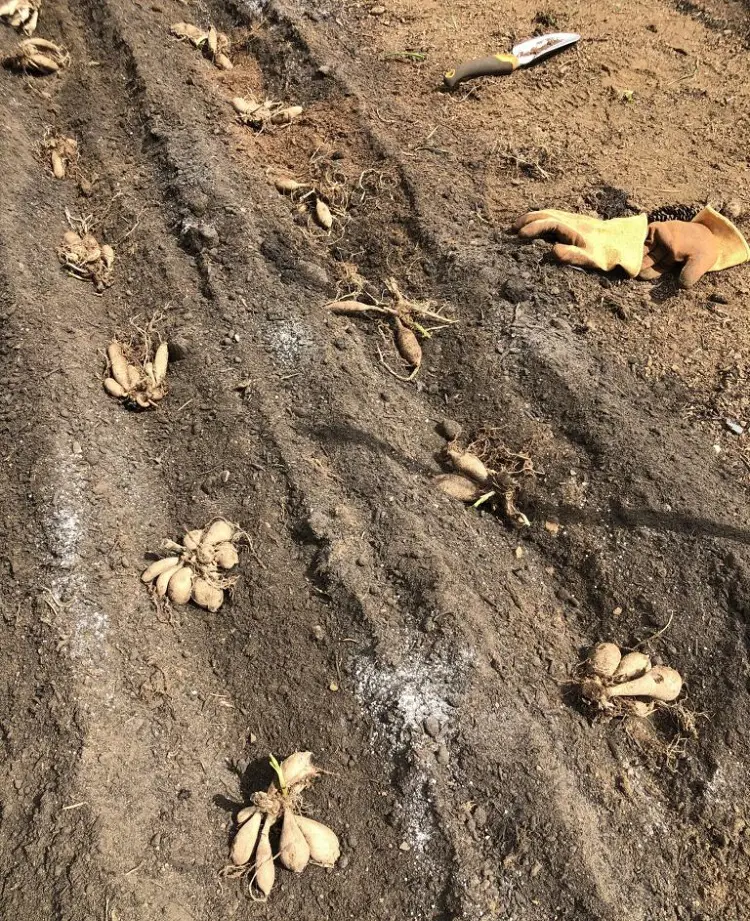
When you're starting with dahlias, plant the tuber about 4 inches deep, with the growing tip just below the soil surface and facing upward. Give them a good watering. If you're planting several, make sure they are about 2 feet apart. Taller types might need support, so put stakes in the ground when you plant to avoid disturbing the tubers.
In the spring, it's a good idea to remove extra side shoots, leaving only one central flower at the top. This helps the main flower grow big and strong without competing for water and nutrients. You can also take the Dahlia tubers out of the ground during this time.
Can You Grow Dahlias From Seed
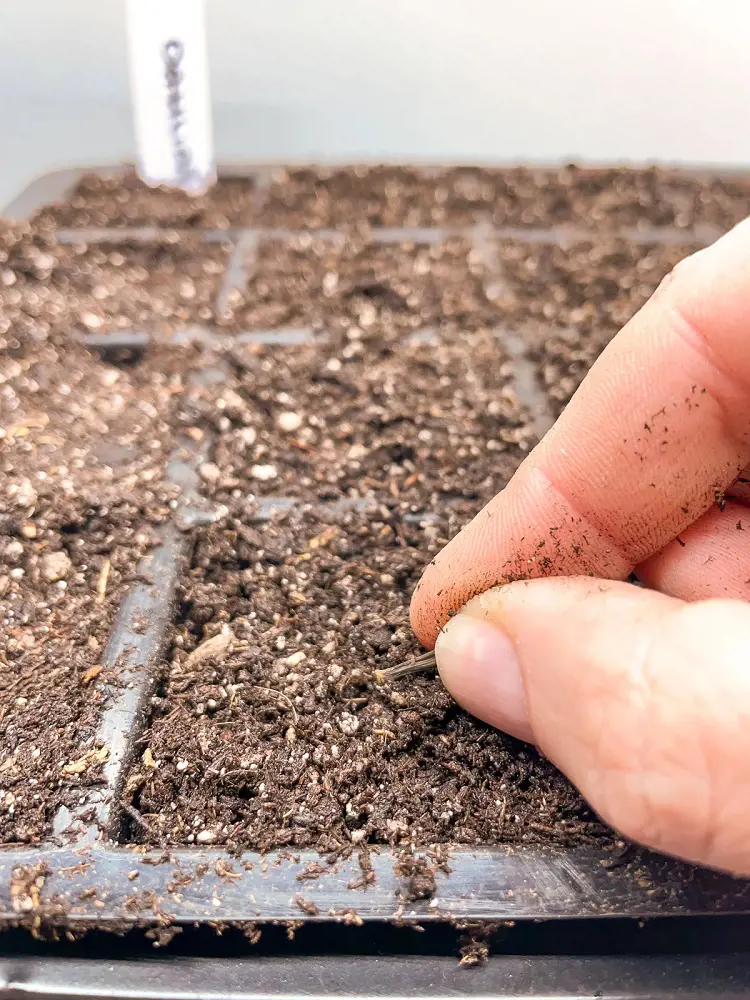
The Dahlia can usually germinate from seeds. You can collect seeds from the flowers that dried up in the fall, or you can buy dahlia seeds from a garden store. To start, plant the seeds in a special tray for seeds in late winter, about two months before the last frost.
Put the seed tray in a sunny spot and make sure the soil stays damp until the seeds start to grow. Once the dahlias have a few sets of leaves, you can transfer them to pots where they can keep growing until it's time to plant them outside in the spring.
How to Get Dahlias to Bloom
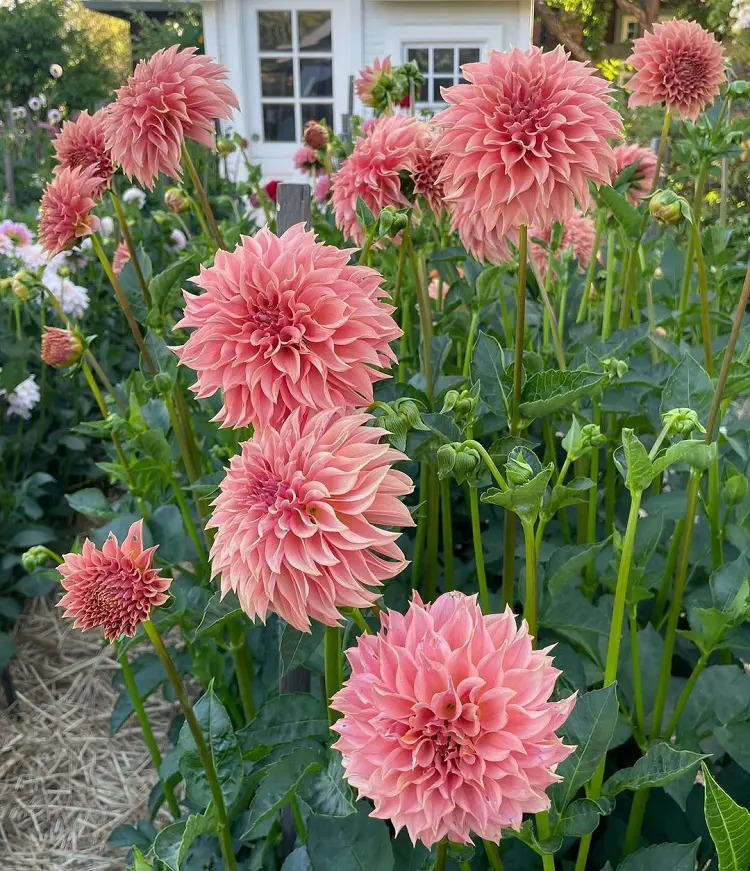
To make your dahlias bloom beautifully, give them the right care. Plant them in well-draining soil in a sunny spot. Water them regularly, keeping the soil consistently moist but not waterlogged. Provide support, like stakes, for tall varieties to prevent bending.
Fertilize every 4-6 weeks during the growing season with a balanced fertilizer. Pinch off the top of the main stem when the plant is about 12 inches tall to encourage bushier growth and more flowers.
Remove faded blooms regularly to stimulate new flower production. With proper care, your dahlias will reward you with a stunning display of colorful blooms.
Appearance and Fragrance
Dahlias are a visual delight during bloom, showcasing a diverse palette of colors and shapes, from small, simple blooms to large, intricate ones. The flowers come in vibrant shades like red, pink, yellow, and purple. The foliage adds to the appeal with its dark green, finely divided structure.
While dahlias are admired for their stunning appearance, they are not generally known for their strong fragrance. Gardeners appreciate them for their visual impact, making them a beautiful addition to gardens seeking a burst of color and varied flower forms.
Dahlia Types
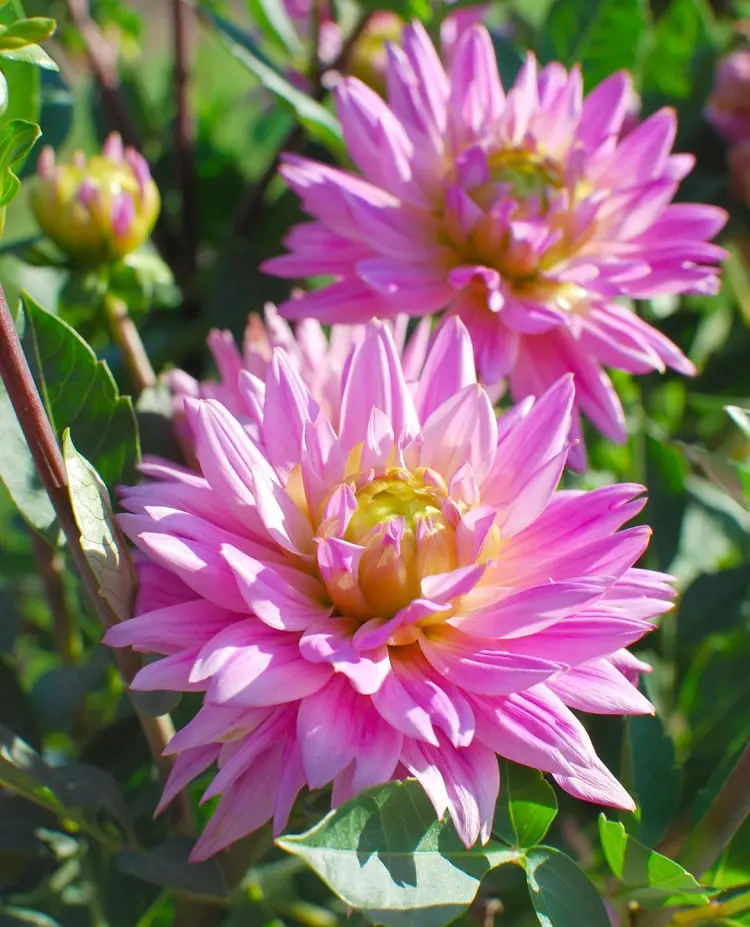
There are numerous varieties of dahlias, each with its unique characteristics, colors, and forms. Some of them are:
1. Pompon Dahlias: These dahlias have small, globe-shaped flowers resembling pom-poms. They come in various colors and are known for their compact and cute appearance.
2. Cactus Dahlias: Cactus dahlias have distinctive, spiky petals that give them a unique and intricate appearance. The petals are often rolled or twisted, creating a dramatic and spiky effect.
3. Dinner Plate Dahlias: As the name suggests, dinner plate dahlias have enormous, plate-sized blooms that can reach up to 12 inches or more in diameter. They come in a wide array of colors and are a stunning focal point in gardens.
4. Bishop Dahlias: Bishop dahlias are known for their dark, almost black foliage, which provides a striking contrast to their vibrant blooms. The flowers can come in various forms, including single, semi-double, or double.
5. Anemone Dahlias: Anemone dahlias have a central disc surrounded by flat, sometimes slightly quilled, petals. The central disc is often a different color than the outer petals, creating a captivating and layered effect.
Challenges With Growing Dahlias

Dahlias, while generally hardy, can face certain issues. Some common problems include:
Powdery Mildew
- Problem: White powdery substance on leaves.
- Solution: Improve air circulation, apply fungicide, and water at the base to keep foliage dry.
Aphids
- Problem: Small insects sucking sap, causing distortion.
- Solution: Use insecticidal soap, introduce beneficial insects, or spray with a strong jet of water.
Slugs and Snails
- Problem: Irregular holes in leaves
- Solution: Set up barriers, use slug bait, or handpick during the evening.
Tuber Rot
- Problem: Soft, decaying tubers
- Solution: Plant in well-drained soil, lift tubers before frost, and store in a dry place.
Botrytis Blight
- Problem: Gray mold on flowers and buds
- Solution: Remove affected parts, improve air circulation, and apply fungicide.
Overwatering
- Problem: Waterlogged soil, leading to root rot.
- Solution: Ensure well-draining soil and water only when the top inch of soil is dry.
Stunted Growth
- Problem: Lack of nutrients
- Solution: Fertilize with a balanced fertilizer, ensuring adequate phosphorus for flowering.
Sunburn
- Problem: Browning or yellowing of leaves due to excessive sunlight
- Solution: Provide partial shade during intense sunlight or relocate to a slightly shadier area.
Recent posts
Plant Care
Plant Care
How To Plant, Grow and Care Majesty Palm
The majestic palm, scientifically known as Ravenea rivularis, makes for a stunning indoor tree with its lush and grand fronds. Originating from Madagascar's river banks, this resilient houseplant is cherished not only for its beauty but also for its ...
Plant Care
How To Grow And Care For A Hosta Plant
Hosta plants are widespread perennials, often grown for their beautiful and diverse foliage. They are extremely easy to care for and can thrive in various conditions, particularly shade or semi-shade. These hardy plants can last for many years and re...
